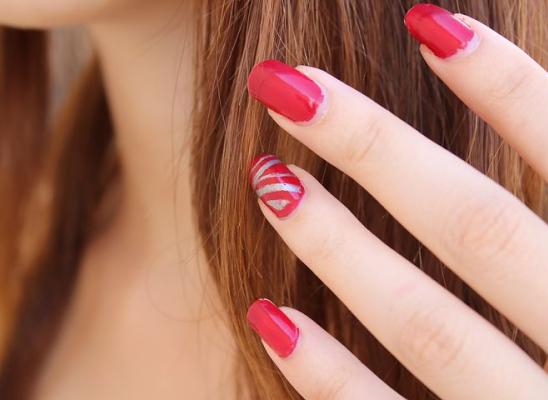Trichotillomania & Intimacy: 5 Ways to Strengthen Your Relationships

Online test
Find out the severity of your symptoms with this free online test
Trichotillomania, commonly referred to as hair pulling or “trich”, is a mental health disorder characterized by repetitive hair pulling, significant emotional distress, and impaired psychosocial functioning. Not surprisingly, trich can have a profound effect on your degree of comfort with intimacy and relationships, affecting how you interact with others. Navigating these challenges requires empathy, open communication, and intentional strategies to strengthen connections with others.
The Emotional Side of Trichotillomania
For someone living with trich, feelings of shame, embarrassment, or frustration are common. These emotions often stem from the visible hair loss as well as the struggle with urges, and the stigma that surrounds hair pulling and mental health in general. Many worry that they will be misunderstood or judged, leading to a tendency to avoid social and intimate situations.
In romantic relationships, these concerns can intensify. Fear of rejection or judgment may lead to the withholding of information about their condition, creating barriers to emotional and physical intimacy. Partners, on the other hand, may feel confused or hurt if they sense their loved one is withdrawing but don’t understand why.
Common challenges in relationships for someone with trich can include:
- Self-esteem and Body Image: Trichotillomania can impact how a person views themselves, impacting self-confidence and self-esteem. They might worry about their partner’s perception of their appearance or feel undeserving of love and affection.
- Communication: The stigma surrounding hair pulling and the worry of what a partner may think can make it hard to feel safe to open up to them. Without understanding the hair pulling or behaviors associated with it (e.g., avoidance), partners may misinterpret what’s happening or feel excluded.
- Physical Intimacy: Concerns about visible signs of hair pulling or the need to conceal them can create discomfort or avoidance of physical closeness. Physical intimacy requires a level of vulnerability that may feel uncomfortable or unsafe to the person with trich. Not understanding the situation, their partner may feel unwanted or confused by the distance.
- Misunderstanding the Behavior: Partners unfamiliar with hair pulling may not understand what it is and what it’s not. For example, a partner may see hair pulling as simply a habit that can be stopped. Misunderstandings like this can lead to communication breakdowns and frustration, or misguided attempts to help.
Tips for Fostering Connection and Understanding
While it can feel a little intimidating, you can have a healthy and supportive intimate relationship. Here are practical steps to enhance connection and mutual understanding:
1. Educate Yourself and Your Partner
Knowledge is power. If you have trich, learn all you can about your condition from reliable resources. Share those resources with your partner. Take time to explain your hair pulling so that they understand what your experience is.
Books, articles, and online communities focused on BFRBs can provide valuable insights. Consider recommending reputable sources like the TLC Foundation for Body-Focused Repetitive Behaviors.
2. Practice Open Communication
Transparency is key to fostering understanding. Share your experiences, emotions, and triggers with your partner. Let them know how trichotillomania affects you and what support you need.
Similarly, encourage your partner to ask questions or express their feelings. Be patient with your partner. Just as it took time for you to come to terms with your trich, they may need time too. Allow them time to process what they’ve learned and think it through.
The good news is, you don’t have to share everything all at once or blurt out your truth. Here are some ways to start the dialogue:
- I want to share something important about myself that might help us understand each other better.
- When I’m stressed, I tend to pull my hair. It’s not something I do intentionally, but it helps me cope in the moment.
- How do you feel about what I’ve shared? I’m here to answer any questions.
There’s no “perfect time” to open up to your partner. Take your time and share how and when you feel comfortable doing so.
3. Establish Boundaries and Respect
Trich may be new to your partner, and they may not be clear about where the boundaries lie. Share with them the boundaries that help you feel comfortable. For example, you might prefer to talk about your hair pulling in certain moments. Help your partner understand what helps you to feel safe.
4. Focus on Emotional Intimacy
While there’s a lot of focus on getting physical, strong relationships are built on a strong emotional connection. Healthy emotional intimacy builds trust and can ease worries about physical intimacy. Build emotional intimacy by:
- Spending quality time together doing this you both enjoy, try new things
- Laugh together. Research finds that couples who laugh together have greater relationship well-being.
- Show affection to each other. Non-sexual affection (e.g., holding hands, cuddling - the kind that doesn’t end in the bedroom) helps build emotional connection and creates feelings of safety and security essential for healthy physical intimacy.
5. Seek Professional Support Together
Consider seeing a therapist together who specializes in trichotillomania or relationship counseling. Therapy can give you a safe, neutral space to explore issues and find healthy strategies for moving forward together.
Of course, you want to continue your own treatment for your trich. Your therapist may be able to offer additional strategies helpful in addressing issues that you may be having as a couple.
The Takeaway
Hair pulling can present unique challenges for intimacy and relationships, but working together, you can your partner can strengthen your bond and build a healthy and satisfying relationship. Whether you’re managing your own trich or supporting a loved one who is, the journey toward connection takes courage and commitment. With mutual willingness to build together, intimacy and healthy relationships can thrive.
References
1. Stemberger, R. M., Thomas, A. M., Mansueto, C. S., & Carter, J. G. (2000). Personal toll of trichotillomania. Journal of Anxiety Disorders, 14(1), 97-104. https://www.sciencedirect.com/science/article/abs/pii/S0887618599000286
2. TLC Foundation for Body-Focused Repetitive Behaviors | BFRB. https://www.bfrb.org/
3. Kurtz, L. E., & Algoe, S. B. (2015). Putting Laughter in Context: Shared Laughter as Behavioral Indicator of Relationship Well-Being. Personal Relationships, 22(4), 573–590. https://pmc.ncbi.nlm.nih.gov/articles/PMC4779443/
4. Jakubiak, B. K., & Feeney, B. C. (2016). Affectionate touch to promote relational, psychological, and physical well-being in adulthood: A theoretical model and review of the research. Personality and Social Psychology Review, 21(3), 228-252. https://doi.org/10.1177/1088868316650307
Online test
Find out the severity of your symptoms with this free online test
Start your journey with TrichStop
Take control of your life and find freedom from hair pulling through professional therapy and evidence-based behavioral techniques.
Start Now



